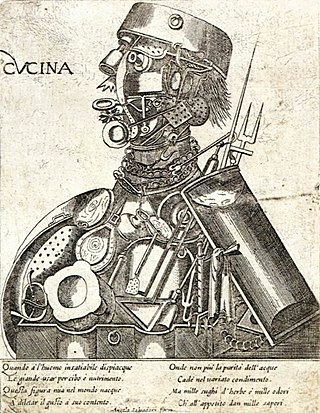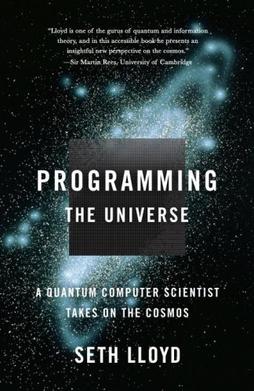
The multiverse is the hypothetical set of all universes. Together, these universes are presumed to comprise everything that exists: the entirety of space, time, matter, energy, information, and the physical laws and constants that describe them. The different universes within the multiverse are called "parallel universes", "flat universes", "other universes", "alternate universes", "multiple universes", "plane universes", "parent and child universes", "many universes", or "many worlds". One common assumption is that the multiverse is a "patchwork quilt of separate universes all bound by the same laws of physics."
Reality is the sum or aggregate of all that is real or existent within the universe, as opposed to that which is only imaginary, nonexistent or nonactual. The term is also used to refer to the ontological status of things, indicating their existence. In physical terms, reality is the totality of a system, known and unknown.

Mind uploading is a speculative process of whole brain emulation in which a brain scan is used to completely emulate the mental state of the individual in a digital computer. The computer would then run a simulation of the brain's information processing, such that it would respond in essentially the same way as the original brain and experience having a sentient conscious mind.

Max Erik Tegmark is a Swedish-American physicist, machine learning researcher and author. He is best known for his book Life 3.0 about what the world might look like as artificial intelligence continues to improve. Tegmark is a professor at the Massachusetts Institute of Technology and the president of the Future of Life Institute.

Diaspora is a hard science fiction novel by the Australian writer Greg Egan which first appeared in print in 1997. It originated as the short story "Wang's Carpets" which originally appeared in the Greg Bear-edited anthology New Legends. The story appears as a chapter of the novel.

Calculating Space is Konrad Zuse's 1969 book on automata theory. He proposed that all processes in the universe are computational. This view is known today as the simulation hypothesis, digital philosophy, digital physics or pancomputationalism. Zuse proposed that the universe is being computed by some sort of cellular automaton or other discrete computing machinery, challenging the long-held view that some physical laws are continuous by nature. He focused on cellular automata as a possible substrate of the computation, and pointed out that the classical notions of entropy and its growth do not make sense in deterministically computed universes.
An artificial chemistry is a chemical-like system that usually consists of objects, called molecules, that interact according to rules resembling chemical reaction rules. Artificial chemistries are created and studied in order to understand fundamental properties of chemical systems, including prebiotic evolution, as well as for developing chemical computing systems. Artificial chemistry is a field within computer science wherein chemical reactions—often biochemical ones—are computer-simulated, yielding insights on evolution, self-assembly, and other biochemical phenomena. The field does not use actual chemicals, and should not be confused with either synthetic chemistry or computational chemistry. Rather, bits of information are used to represent the starting molecules, and the end products are examined along with the processes that led to them. The field originated in artificial life but has shown to be a versatile method with applications in many fields such as chemistry, economics, sociology and linguistics.

Simulacron-3 (1964), by Daniel F. Galouye, is an American science fiction novel featuring an early literary description of a simulated reality.

The Thirteenth Floor is a 1999 science fiction film written and directed by Josef Rusnak and produced by Roland Emmerich’s Centropolis Entertainment. Loosely based on Daniel F. Galouye’s 1964 novel, Simulacron-3, it is a remake of Rainer Werner Fassbinder’s 1973 miniseries World on a Wire. The film stars Craig Bierko, Gretchen Mol, Armin Mueller-Stahl, Vincent D'Onofrio, and Dennis Haysbert. In 2000, The Thirteenth Floor was nominated for the Saturn Award for Best Science Fiction Film but lost to The Matrix.
In physics and cosmology, the mathematical universe hypothesis (MUH), also known as the ultimate ensemble theory, is a speculative "theory of everything" (TOE) proposed by cosmologist Max Tegmark. According to the hypothesis, the universe is a mathematical object in and of itself. Tegmark extends this idea to hypothesize that all mathematical objects exist, which he describes as a form of Platonism or Modal realism.
Neuroinformatics is the emergent field that combines informatics and neuroscience. Neuroinformatics is related with neuroscience data and information processing by artificial neural networks. There are three main directions where neuroinformatics has to be applied:
In philosophy of mind, the computational theory of mind (CTM), also known as computationalism, is a family of views that hold that the human mind is an information processing system and that cognition and consciousness together are a form of computation. It is closely related to functionalism, a broader theory that defines mental states by what they do rather than what they're made of.

Programming the Universe: A Quantum Computer Scientist Takes On the Cosmos is a 2006 popular science book by Seth Lloyd, professor of mechanical engineering at the Massachusetts Institute of Technology. The book proposes that the Universe is a quantum computer (supercomputer), and advances in the understanding of physics may come from viewing entropy as a phenomenon of information, rather than simply thermodynamics. Lloyd also postulates that the Universe can be fully simulated using a quantum computer; however, in the absence of a theory of quantum gravity, such a simulation is not yet possible. "Particles not only collide, they compute."
The simulation hypothesis proposes that what we experience as the world is actually a simulated reality, such as a computer simulation in which we ourselves are constructs. There has been much debate over this topic in the philosophical discourse, and regarding practical applications in computing.

In virtual reality (VR), immersion is the perception of being physically present in a non-physical world. The perception is created by surrounding the user of the VR system in images, sound or other stimuli that provide an engrossing total environment.
Digital immortality is the hypothetical yet increasingly realistic concept of storing a person's personality in digital substrate, i.e., a computer, robot or cyberspace. The result might look like an avatar behaving, reacting, and thinking like a person on the basis of that person's digital archive. After the death of the individual, this avatar could remain static or continue to learn and self-improve autonomously.

A reversible cellular automaton is a cellular automaton in which every configuration has a unique predecessor. That is, it is a regular grid of cells, each containing a state drawn from a finite set of states, with a rule for updating all cells simultaneously based on the states of their neighbors, such that the previous state of any cell before an update can be determined uniquely from the updated states of all the cells. The time-reversed dynamics of a reversible cellular automaton can always be described by another cellular automaton rule, possibly on a much larger neighborhood.
Simulated consciousness,synthetic consciousness, etc. is a theme of a number of works in science fiction. The theme is one step beyond the concept of the "brain in a vat"/"simulated reality" in that not only the perceived reality but the brain and its consciousness are simulations themselves.

The UniverseMachine is a project carrying out astrophysical supercomputer simulations of various models of possible universes, created by astronomer Peter Behroozi and his research team at the Steward Observatory and the University of Arizona. Numerous universes with different physical characteristics may be simulated in order to develop insights into the possible beginning and evolution of our universe. A major objective is to better understand the role of dark matter in the development of the universe. According to Behroozi, "On the computer, we can create many different universes and compare them to the actual one, and that lets us infer which rules lead to the one we see."
"Crystal Nights" is a science-fiction short story by Australian writer Greg Egan, first published in Interzone 215 in April 2008.










